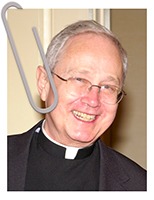I asked myself whether I had ever spoken with one of the 21 million “trafficked” persons. Not knowingly. Yet, I believe I have spoken with many victims without knowing it. I know I certainly would not have to leave the US.
 It’s a vicious cycle that law enforcement in the US sees time and time again. Women can be pulled in to commercial sex through gangs or pimps—the former function as delivery services, taking women to houses in the area they control, while the latter focus on hotels and street-level prostitution. In gang-controlled situations, it’s usually going to be that the girl is from the area. When it’s a pimp … it’ll probably be girls from all over the place. The Department of Homeland Security defines human trafficking as a “modern-day form of slavery involving the illegal trade of people for exploitation or commercial gain.”
It’s a vicious cycle that law enforcement in the US sees time and time again. Women can be pulled in to commercial sex through gangs or pimps—the former function as delivery services, taking women to houses in the area they control, while the latter focus on hotels and street-level prostitution. In gang-controlled situations, it’s usually going to be that the girl is from the area. When it’s a pimp … it’ll probably be girls from all over the place. The Department of Homeland Security defines human trafficking as a “modern-day form of slavery involving the illegal trade of people for exploitation or commercial gain.”
Are you aware there is an international day against trafficking? The Vincentian Family representatives remind us: “It is not a celebration … it is a day to resist, to sensitize, to raise awareness, to call attention, to point out that there is an unresolved problem, an important and pending issue in societies so that, through this awareness, governments and states will act and take measures or that citizens will demand this from their representatives.” VIN-JPIC
The Congregation of the Mission and the Daughters of Charity are members of the Committee of Non-Governmental Organizations (NGOs) advocating against trafficking in persons. The CM representative at the UN is also part of the Central Commission of Consecrated Life against trafficking in persons in the Americas (nine regional or national commissions). For this reason, we are also associated with Talitha Kum, the international network of Consecrated Life against trafficking in persons.
Human trafficking is a crime that exploits women, children, and men for numerous purposes including forced labor, traffic of organs, and sex. The International Labor Organization estimates that 21 million people are victims of forced labor globally. This estimate also includes victims of human trafficking for labor and sexual exploitation. While it is not known how many of these victims were trafficked, the estimate implies that currently, there are millions of trafficking victims in the world.
The work of many social organizations, religious communities, NGOs, etc., aims to prioritize victims coming from a context of armed conflict and those identified among large refugee and migration flows. Its focus is also the work with victims trafficked for the purpose of sexual exploitation, organ removal, forced begging, forced criminality and emerging exploitative purposes (e.g. skin removal, online pornography).
In September 2015, the world adopted the 2030 Sustainable Development Agenda and embraced goals and targets on trafficking in persons. These goals call for an end to trafficking and violence against children, as well as for needed measures against human trafficking, and they aim at the elimination of all forms of violence against and exploitation of women and girls.
‘Responding to the Trafficking of Children and Young People’
This year, the United Nations Office on Drugs and Crime (UNODC) has chosen “responding to the trafficking of children and young people” as the focus of the World Day. This year’s campaign highlights the fact that almost a third of trafficking victims are children. The theme draws attention to the issues faced by trafficked children and to possible action initiatives linked to safeguarding and ensuring justice for child victims.
On Monday, July 30, we invite you to honor the international day against the victimization of human beings with your prayer and reflection but also getting informed and joining any local or national efforts so that this day marks another step in our commitment against trafficking in persons. We can collaborate with the efforts others have organized in the prevention, accompaniment, rescue, healing and the social and work relocation of the victims.
Why Do We Have an International Day Against Human Trafficking?
It is not a celebration … it is a day to resist, to sensitize, to raise awareness, to call attention, to point out that there is an unresolved problem, an important and pending issue in societies so that, through this awareness, governments and states will act and take measures or that citizens will demand this from their representatives.
New York July 30, 2018
Congregation of the Mission United Nations Office
Please use these logos and infographics on your social media channels. Hashtag for Twitter and Instagram #EndHumanTrafficking
Full Social Media package: Click Here.

Well articulated,Father John! In my first year at Saint Joe’s (3rd year high school),our prefect,Father William Casey,CM, gave us some good lessons in slavery as he taught us American History. Your essay manifests that slavery continues in more diabolical forms than ever. Let us pray that we reverence each person as reflection of God’s beautiful image and that we act accordingly. Thank you for your beautiful and thorough reminder!
Ed Ambrose,AA,St. Joe’s,1957